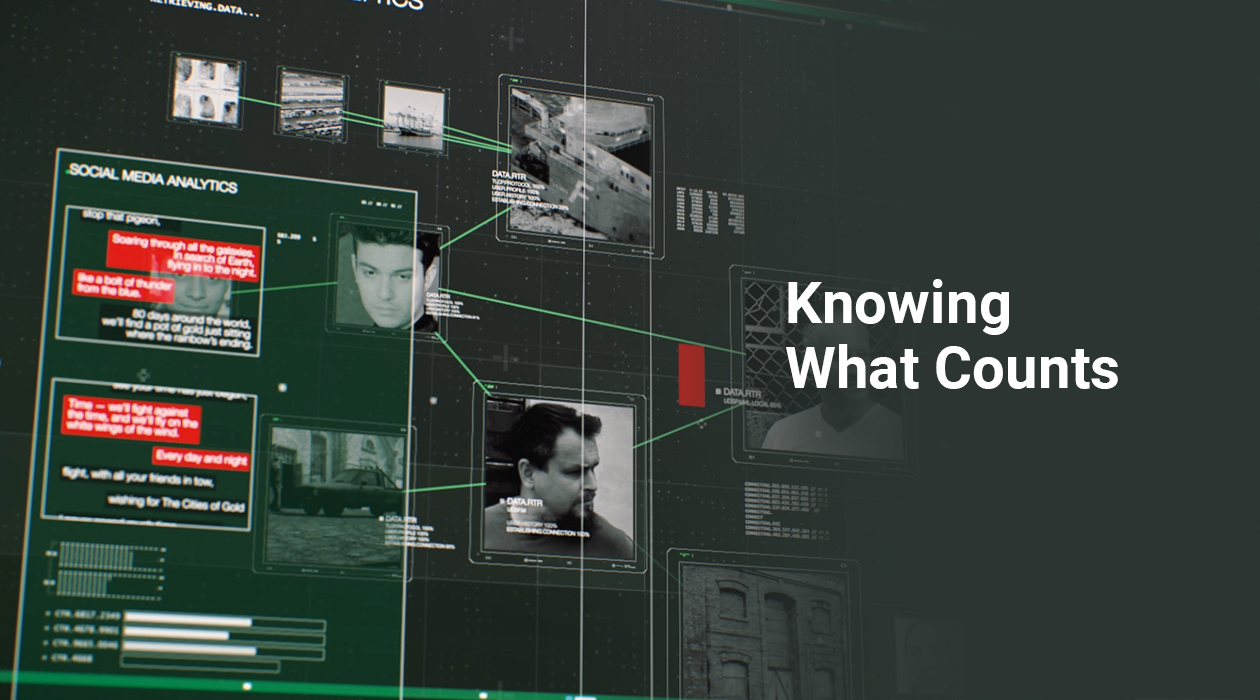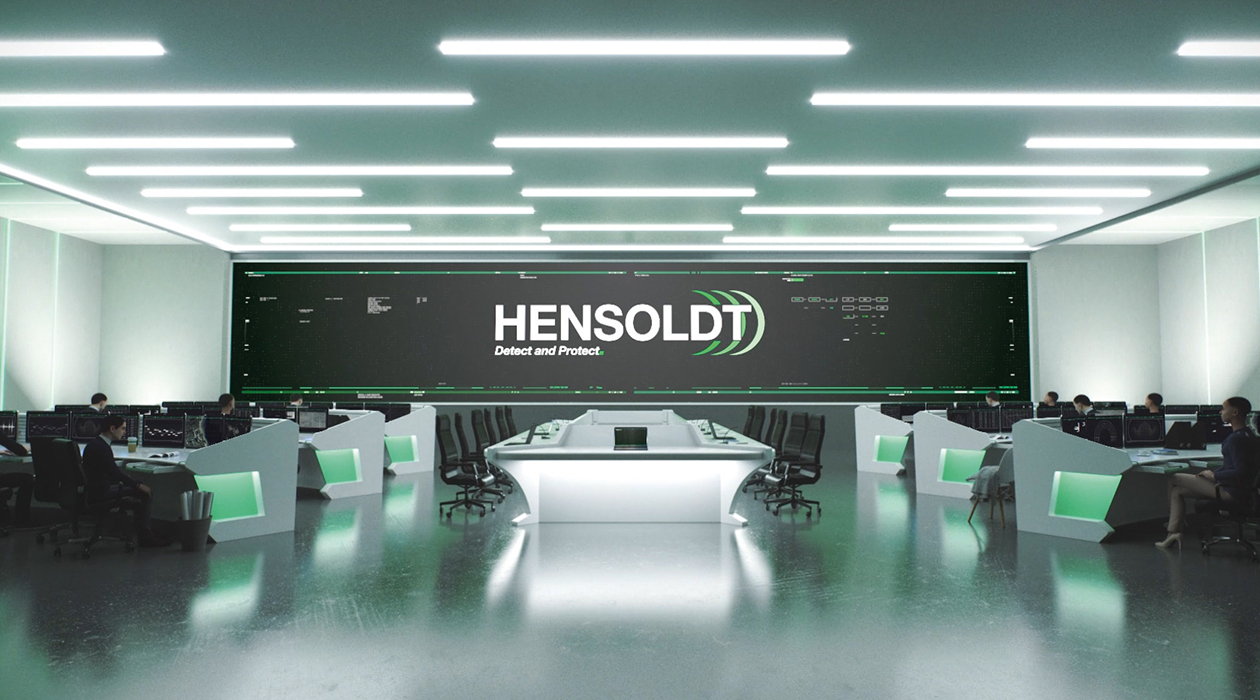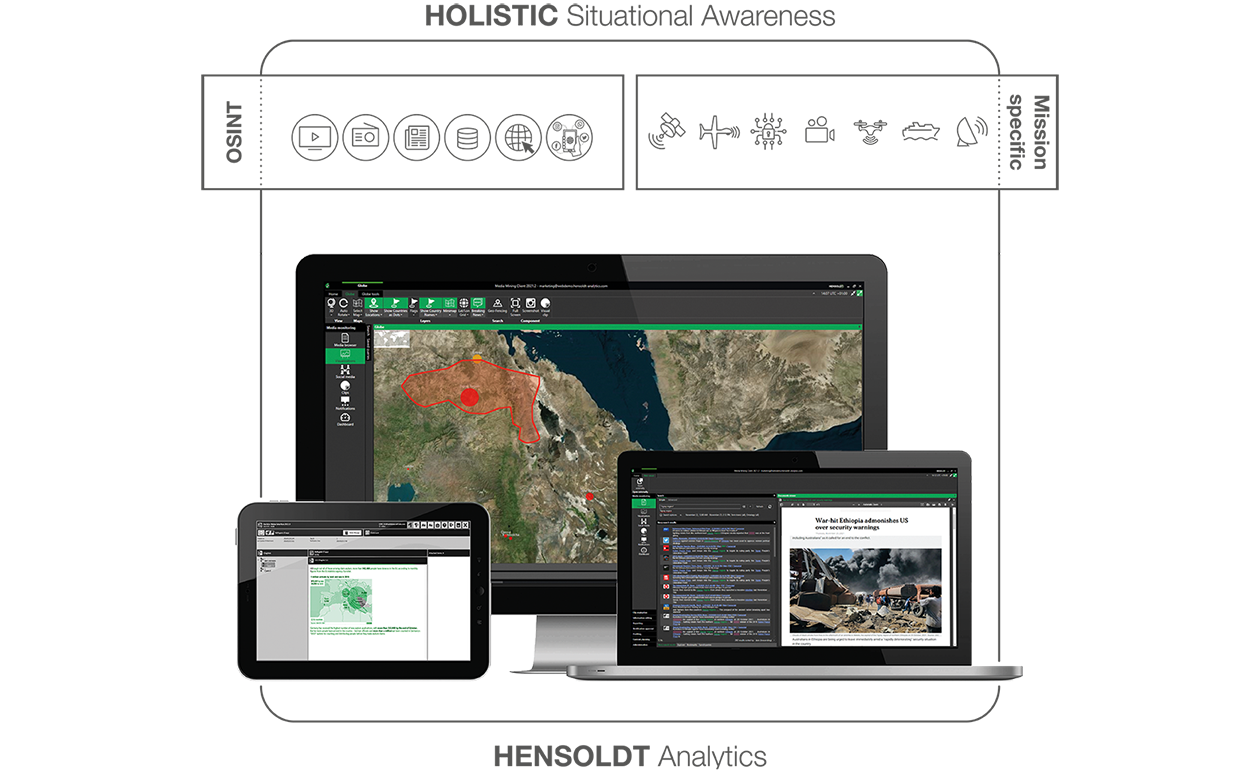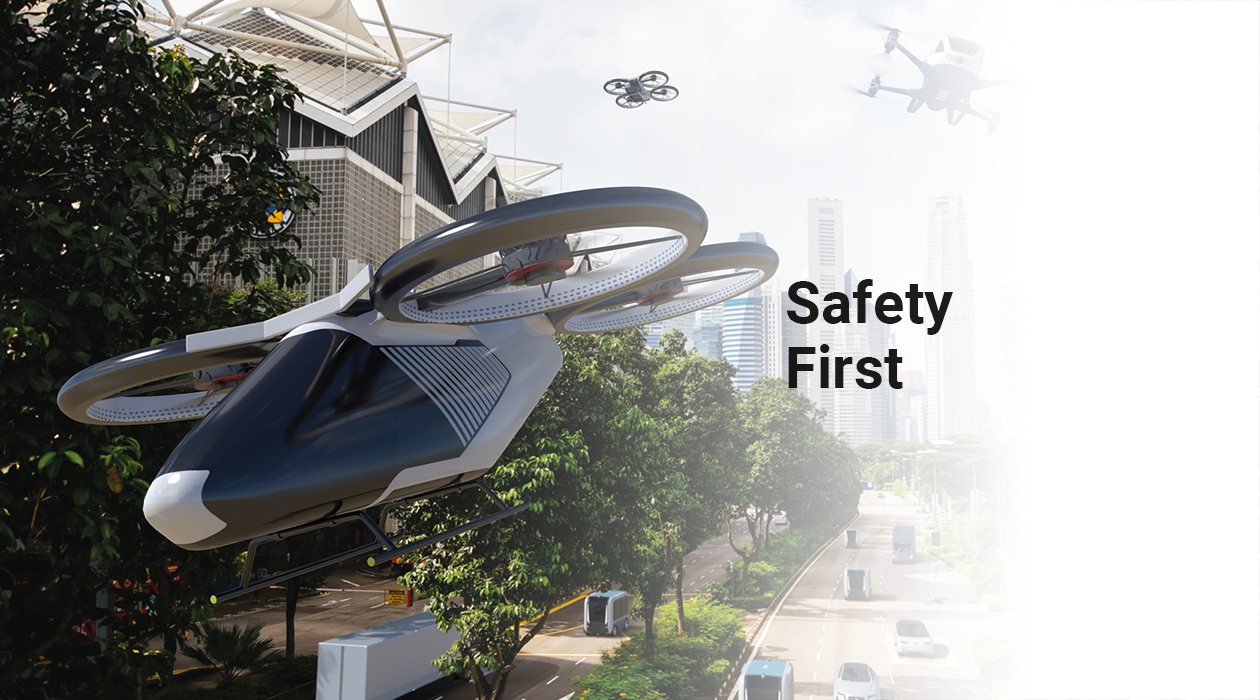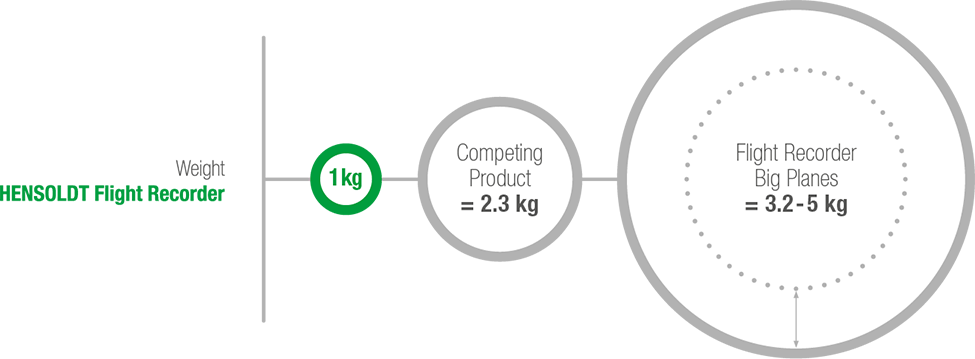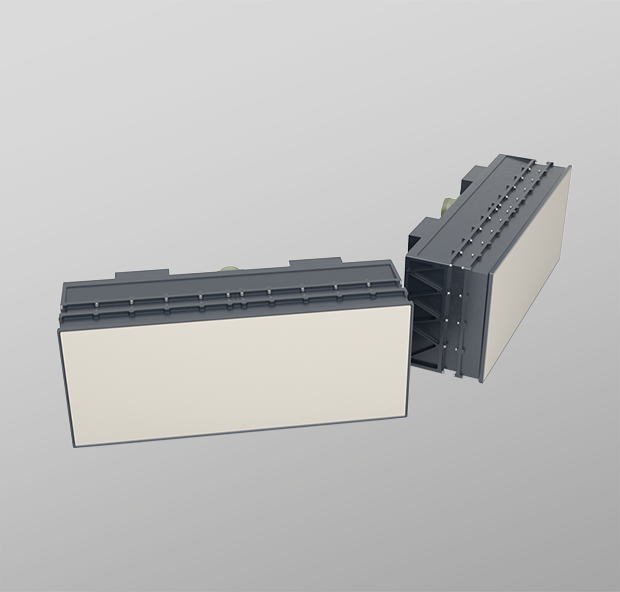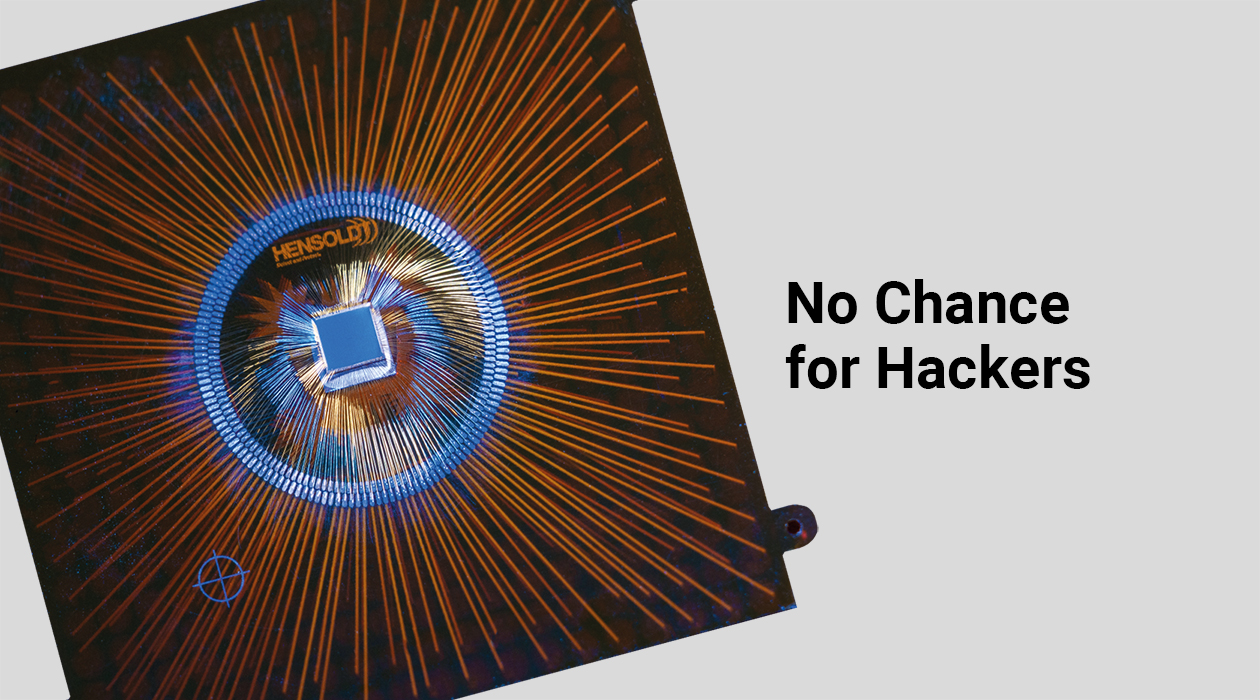
No Chance for Hackers
The threat level from cyberspace is rising on an almost daily basis, with this trend further driven by increasing networking and greater use of digital processes due to the pandemic. This represents a unique challenge, particularly in the high-security environments in which HENSOLDT operates. The solutions to this challenge are being developed by HENSOLDT Cyber under the auspices of HENSOLDT Ventures – the agile innovation hub with an extremely demanding mission.
Many things used to be less complex – or at least more manageable. A HENSOLDT radar would once – quite literally – be isolated in the desert. Software updates would be loaded directly from a laptop, using local data. Potential damage was always contained locally. Nowadays, systems are deeply interconnected, both within their own subsystems and with the outside world. Future projects such as the air combat cloud within the Future Combat Air System (“FCAS”) and the interconnected Main Ground Combat System (“MGCS”) are prime examples of how this trend is set to accelerate still further in the years ahead. After all, this interconnectivity provides system users with whole new potential on the basis of information superiority.
At the same time, however, this potentially leaves an open goal for cyberattacks, both in a military and civilian context. First, due to the human factor. Entire companies and infrastructures can be incapacitated, particularly during the pandemic and due to the resulting increase in mobile working. But also, as a result of the technology used. In the case of mass-produced hardware and software, you can never be sure of its vulnerabilities – and it is almost impossible to check for them.
HENSOLDT Cyber identified this problem at an early stage and set about working on solutions, specifically for components that are incorporated within systems with particularly high security requirements. Within a very short space of time, a young team developed the processor MiG-V (a processor based on RISC-V called MiG-V “Made in Germany”-V) – the first of its kind in Europe. HENSOLDT Cyber also developed a new high-security operating system: TRENTOS. HENSOLDT Cyber also takes a safety-first approach when it comes to the software running on this operating system and advises third parties to ensure that such applications are developed in line with the same stringent security mechanisms. This gives rise to an overall system that is highly secure across all security-critical software and hardware levels – and that is globally unique at this quality standard. It does not give hackers a chance, as all components can now be inspected in detail and therefore protected. The key to success is therefore “secure IT” rather than “IT security”. HENSOLDT Cyber is addressing the root cause of the problem instead of subsequently securing vulnerable IT by merely tackling symptoms.
The vision is that hardware and software will be gradually integrated within new HENSOLDT products and that existing products will be brought right up to date, for example by replacing processors. At the same time, all components are continuously updated, new dangers evaluated, and new methods developed to defend against them. To this end, HENSOLDT Cyber participates in joint research projects with the Technical University of Munich, other universities all over Germany, and non-university research institutions such as Fraunhofer. Thanks to the early involvement of young academics and technology experts, HENSOLDT Cyber is already engaging with future users and developers.
Under the auspices of HENSOLDT Ventures, HENSOLDT Cyber is an impressive illustration of the power of the in-house innovation incubator. HENSOLDT Analytics and the joint venture J.A.M.E.S (Jetted Additively Manufactured Electronic Sources) – set up with an Israeli 3-D printing specialist in 2021 – also make HENSOLDT Ventures a crucial strategic pillar within the company, true to its own divisional slogan: “revolutionary, not evolutionary.”
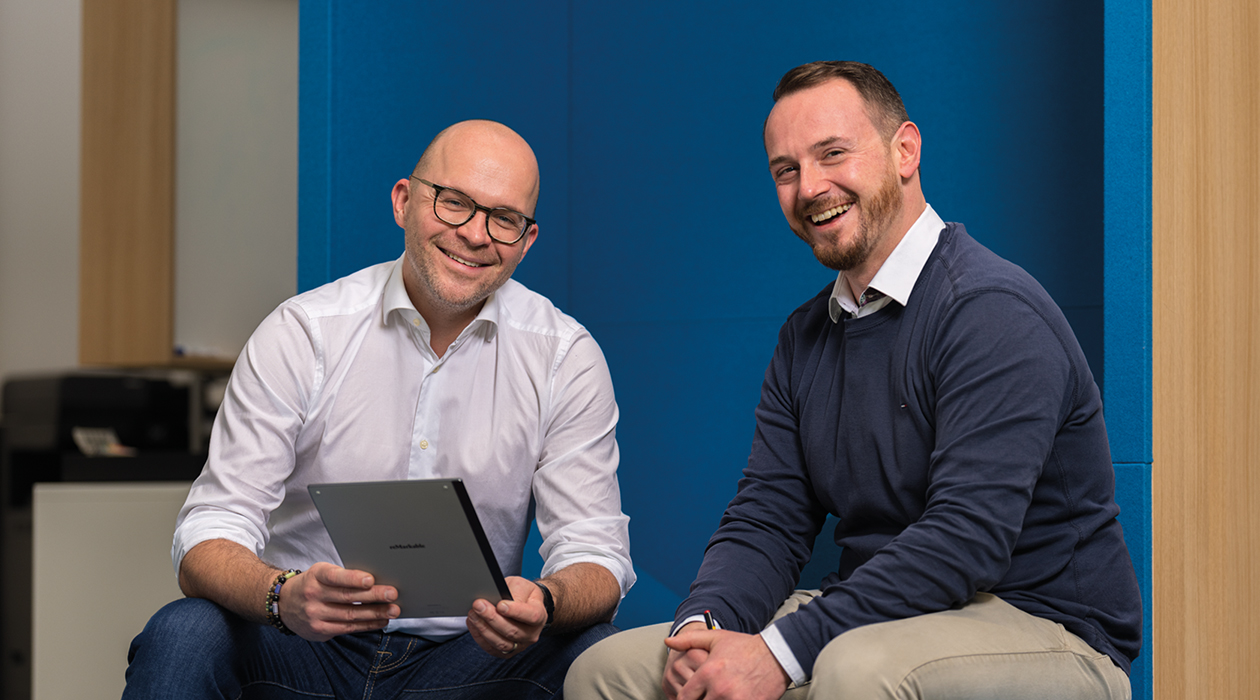
Marian Rachow
Alongside his position as Head of HENSOLDT Ventures, Marian Rachow is also Managing Director of HENSOLDT Cyber GmbH. In a career spanning more than 20 years and several management positions within the Airbus Group, the electronic engineering graduate also completed an executive management program at Harvard Business School. Following the establishment of multiple start-ups, Rachow returned to the HENSOLDT senior management team in 2017 and has since been continuously growing HENSOLDT Ventures and its subsidiaries.
Sascha Kegreiß
Sascha Kegreiß was appointed Chief Technical Officer of HENSOLDT Cyber GmbH in 2019. As an engineering graduate specializing in information technology, he previously worked as a senior software engineer and developer, including at Airbus Defence. In his current role, he focuses solely on cybersecurity.
Three Questions for Marian Rachow
Head of HENSOLDT Ventures and Managing Director of HENSOLDT Cyber
Idea – Start-Up – Innovation
What role does HENSOLDT Ventures play in today’s HENSOLDT family?
Here at HENSOLDT Ventures, we aim to be one of the major drivers of innovation at the company. Our focus is on disruptive and less incremental developments, particularly in the areas of big data, cybersecurity, artificial intelligence, and robotics. As a company within a company, we can develop independently yet closely in line with the portfolio of the Products and Solutions Group, which adds considerable value within the overall context. To this end, we are establishing agile divisions such as HENSOLDT Cyber and HENSOLDT Analytics, where we develop key technologies in the two areas of “highly secure basic IT” and “artificial intelligence” – and these technologies will be integrated into many, if not all, future products of HENSOLDT. In order to accelerate this process, we are building prototypes in Ventures labs, for example a drone that captures another drone using AI. With prototypes such as these, we impress customers and generate new projects, the aim being to incorporate these key technologies within the HENSOLDT Group.
Do you have completely free rein at HENSOLDT Ventures?
We are team players, which is why we have been able to establish ourselves so quickly and firmly within the company. We think outside the box and always in an entrepreneurial way, in keeping with the ONE HENSOLDT ethos. We focus on what takes HENSOLDT to the next technological level. We therefore pitch all our projects to the Executive Committee and the Management Board in order to secure investment. Here, HENSOLDT acts as an internal investor in a corporate start-up. The future value added for HENSOLDT and, most importantly, for our customers must be at the forefront. We have more freedom on the process side when implementing these projects, which certainly gives us an advantage in terms of speed. In particular, the overarching solutions of HENSOLDT Cyber and HENSOLDT Analytics prove how an idea can soon grow into innovations and even separate companies that benefit the entire HENSOLDT Group.
How do you attract the necessary skilled and talented personnel?
The entire defence and security industry is facing the challenge of attracting young talent. Since we were founded in 2018, we have hired some 100 highly qualified employees despite a highly competitive recruitment market – and received roughly 3,500 applications for these positions. After all, we work on exciting topics that appeal particularly to young people with a lot of potential. We also offer, of course, a modern and collaborative open-plan office and numerous opportunities for flexible mobile working. The average age of our team is about 30, which is considerably lower than the average age at HENSOLDT. Nonetheless, we always ensure that our teams are able to draw on the expertise of experienced employees. The combination of deep tech, considerable freedom (which inspires each and every employee to help shape their division), flexible working, a modern office environment, internationality, personal and professional development, and the security offered by the HENSOLDT parent company seems to be the recipe for success, which is why young talents choose us and therefore the defence industry.
Three Questions for Sascha Kegreiß
CTO of HENSOLDT Cyber
Processor – Software – Security
How is the danger posed by hackers evolving? And how does HENSOLDT protect itself and its products against this danger?
The risk is growing exponentially. On the one hand, increasing connectivity leads to a rise in the number of potential weak points; on the other hand, hackers can often gain access to an organization’s entire system, including all its components, if their attack is successful. Here at HENSOLDT Cyber, we therefore diverge from the usual approaches, for example firewalls. We address the problem a stage earlier by developing our own secure processor and our own secure operating system, with critical software for our systems and devices running on this operating system. We call this “secure IT” rather than “IT security”.
Why is this now so important for HENSOLDT?
It is a prerequisite for being able to sell secure and integrated solutions as a systems provider. Previously, one of the greatest weaknesses lay in system components that were used as “black boxes”, such as processors, operating systems, and firmware. This is because these components originate from different sources, are closed systems, and – whether intended or not – often exhibit vulnerabilities that can be attacked. We will therefore gradually replace these elements with our own secure alternatives, the security of which we are familiar with and able to verify. Connecting hardware and software gives rise to a highly secure overall system that raises the bar in terms of its excellent security.
How can you guarantee this security, and in which fields will the solutions be deployed?
By virtue of our processor, our operating system, and secure application software, we can use formal methods to demonstrate that there is no single non-specified critical state in the entire system that would enable an attack. The key point is to design these three levels consistently and completely as a secure IT landscape. This package is, of course, ideally suited to all high-security fields within the defence sector, but also for critical infrastructure or applications in space, where it is often not possible to repair damage simply because of the distances involved. Integration within our own products has only just begun, but the possible areas of application go well beyond.
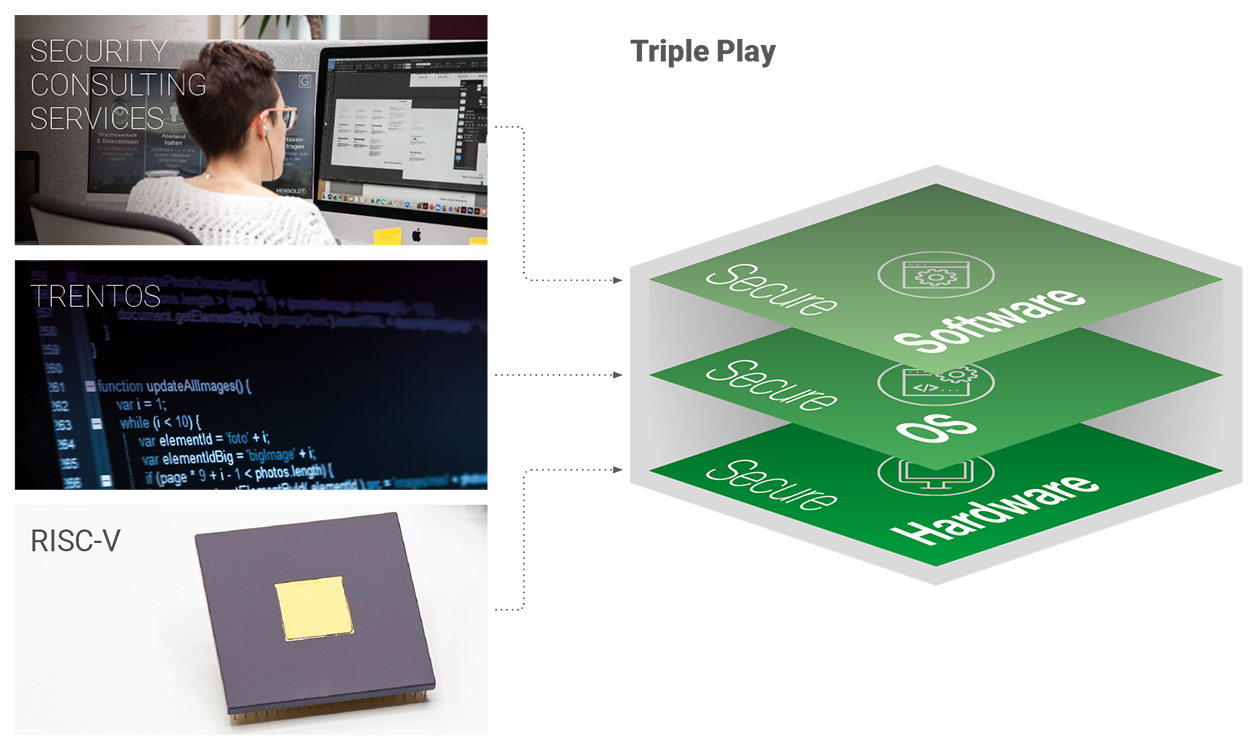
Triple Play
Designing the processor, operating system, and software consistently and completely as a secure IT landscape is the hallmark of HENSOLDT Cyber.
SECURITY CONSULTING SERVICES
With a customised consulting service and secure application software, IT can be designed seamlessly and securely.
TRENTOS
HENSOLDT Cyber’s highly secure operating system isolates its components and restricts communication to expressly approved channels. As such, the entire flow of information remains traceable and therefore secure.
RISC-V
This all-purpose processor, developed by HENSOLDT Cyber and based on an open-source architecture, enables complete control over the development and production chain. Logic encryption prevents infiltration by hardware Trojans, thus making the processor ideal for high-security applications.
